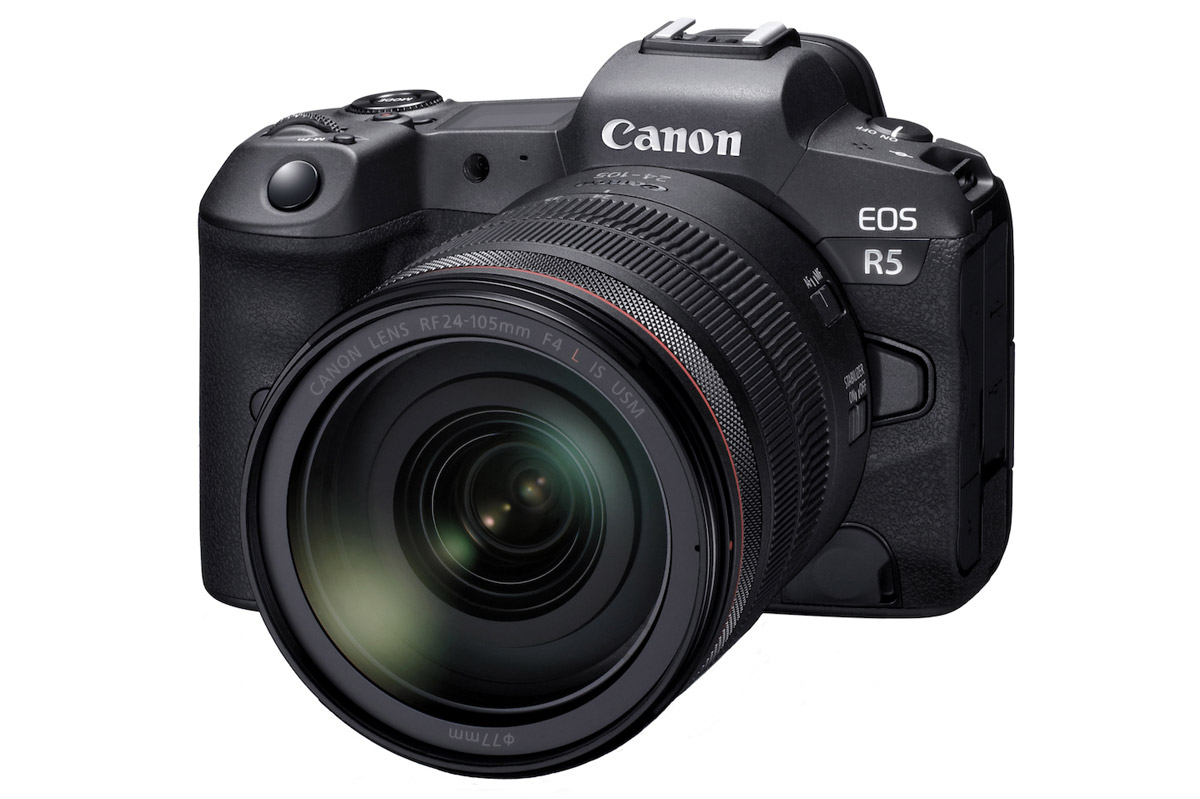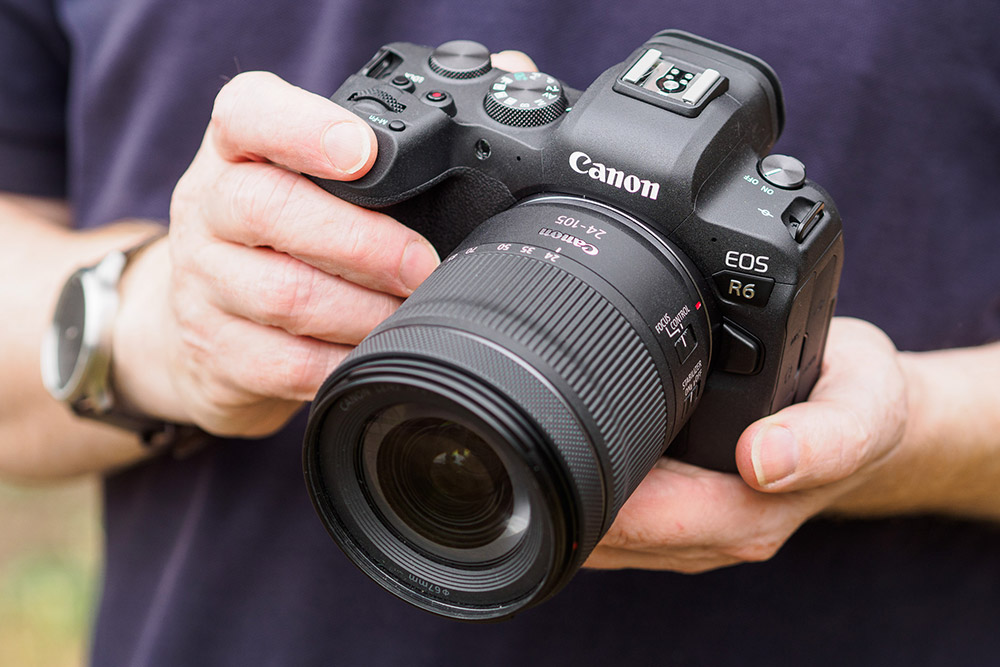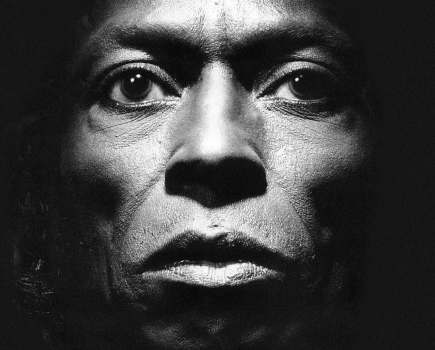Canon has announced firmware updates for its EOS R3, R5 and R6 cameras which offer a variety of improvements in shooting speeds, streamlined workflows and extended recording times.
The EOS R3 firmware update (v1.20) increases frame rates from 30fps up to 195fps at full resolution when shooting in jpeg, HEIF or raw.
The new R3 firmware also adds in-camera focus stacking of images taken with focus bracketing, offers Full HD video shooting at 240p and allows for Cloud RAW Image Processing (like in the Canon EOS R7).
R3 users can now assign a 1.6x crop or other crop ratios to a custom button on the camera.
The EOS R5’s firmware update (v1.60) includes adding Auto Power Off Temperature, which, depending on the conditions, enables longer recording times to be achieved
The new firmware offers a number of updates to all three cameras for operation with Canon’s Software Development Kit (SDK).
The new functionality for SDK users includes support for remote sensor cleaning, the ability to activate focus bracketing, the option to set high frame rate video and first curtain/second curtain/high-speed synchronisation.
For the EOS R6 it adds the ability to set mode dial functions remotely via the SDK.

The EOS R5 now has Auto Power Off Temperature via firmware v1.60
See below for the full Canon Europe press release
Canon introduces more speed and endurance to the R System with its latest firmware
Based on user feedback, Canon’s latest firmware update allows new levels of speed and efficiency
London, United Kingdom, 22nd July 2022 – Canon Europe today announces firmware updates in response to feedback and requests from users. For the EOS R3, firmware v1.20 sets new standards for high speed, while the EOSR5 firmware v1.60 extends recording times and the EOS R6 firmware v1.60 streamlines workflows.
Capture every second of the action
The EOS R3 is already a powerhouse for news and sports and the v1.20 firmware update further improves on its incredible speed. With the new custom high-speed continuous shooting setting, users can capture at frame rates from 30fps up to an astonishing 195fps [i], at full resolution in JPEG, HEIF or RAW. This gives photographers the ability to capture the definitive moment of action, such as when the bat connects with the ball in baseball or when a bird of prey attacks.
It’s not just lightning-fast stills this upgrade offers. EOS R3 users will also be able to capture Full HD movies at 240p, to achieve frame rate speeds previously only possible on dedicated video cameras. 240p recording slows down the action by a factor of six, for smooth slow motion that’s perfect for seeing pivotal moments in a fast-moving situation.
Streamlined workflows
To ensure photojournalists and reporters can beat the competition, the v1.20 update simplifies operation and enables them to cut down the time between capture and publication. Featured in the newly launched EOS R7, Cloud RAW Image Processing [ii] will now be available in the EOS R3, applying sophisticated deep learning processing within image.canon to improve the resolution and sharpness, whilst also reducing the potential for moiré in images. This also supports neural network imaging processing that provides stunning, AI based noise reduction without the loss of detail. The EOS R3 also gains in-camera compositing (focus stacking) of images taken with focus bracketing, to create images with a great depth of field and sharpness – perfect for macro photography. This function is also possible when used with the Speedlite EL-1.
In response to feedback, users can now assign a 1.6x crop or other crop ratios to a custom button on the EOS R3, which acts as a built-in extender so that photographers can quickly and easily zoom in on newsworthy moments.
Enhancing video capabilities
Addressing feedback from vloggers, that the edges of captured video would shake in selfie-mode when shooting with an ultra wide-angle lens, the EOS R3, EOS R5 and EOS R6 now include wobble correction within the Digital Movie IS function. This correction is in addition to the conventional shift correction of Digital Movie IS, for much more stable shooting. A time-lapse movie function has also been added to the EOS R3, with the ability to retain time lapse movie settings if the camera is powered down accidentally.
The v1.60 firmware for the EOS R5 will also bring a popular feature of the EOS R3 to the EOS R5 – Auto Power Off Temperature – which (depending on conditions) enables longer recording times to be achieved [iii].
8K 30P
Auto power off temperature – Standard (same as previous 1.5.2 firmware)
- Full Sensor Width: 20 minutes [iii]
- Full Sensor Width RAW: 20 minutes
- Auto power off temperature – High (New in Firmware v1.6.0)
- Full Sensor Width: 45 minutes [iii]
- Full Sensor Width RAW: 45 minutes [iii]
4K 60P
Auto power off temperature – Standard (same as previous 1.5.2 firmware)
- Full Sensor Width: 35 minutes [iii]
- APS-C crop (5.1K oversampled): 25 minutes
- Auto power off temperature – High (New in Firmware v1.6.0)
- Full Sensor Width: 60 minutes or longer [iii]
- APS-C crop (5.1K oversampled): 50 minutes [iii]

The EOS R6 now offers the ability to set mode dial functions remotely via the SDK
SDK Updates
The new firmware offers a number of updates for operation with Canon’s market leading Software Development Kit (SDK). New functionality for SDK users includes support for remote sensor cleaning, the ability to activate focus bracketing, the option to set high frame rate video and first curtain/second curtain/high-speed synchronisation, and for the EOS R6, the ability to set mode dial functions remotely via the SDK. These additions further expand the capabilities of the EOS R3, EOS R5 and EOS R6 for commercial applications.
The EOS R3 v1.20 firmware update is available to download here: https://www.canon.co.uk/support/consumer_products/products/cameras/digital_slr/eos-r3.html?type=firmware
To download the v1.60 firmware update, please visit the following pages:
More details about Canon’s leading SDK programme can be found here: https://www.canon.co.uk/pro/stories/eos-digital-sdk-explained/
[i] Custom high speed continuous shooting is limited to a maximum of 50 shots at all speeds and AF / AE is fixed on the first frame.
[ii] This is a chargeable service and will be available from 25th July.
[iii] This functionality means the exterior of the camera will become hotter depending on the operational environment. Times given are based on Canon testing conditions at +23°C/73°F. If ambient temperature is higher than +23°C/73°F, the available recording time will be shorter. Recording is limited to 29 minutes 59 seconds. Indicates the time when recording can be resumed immediately.








